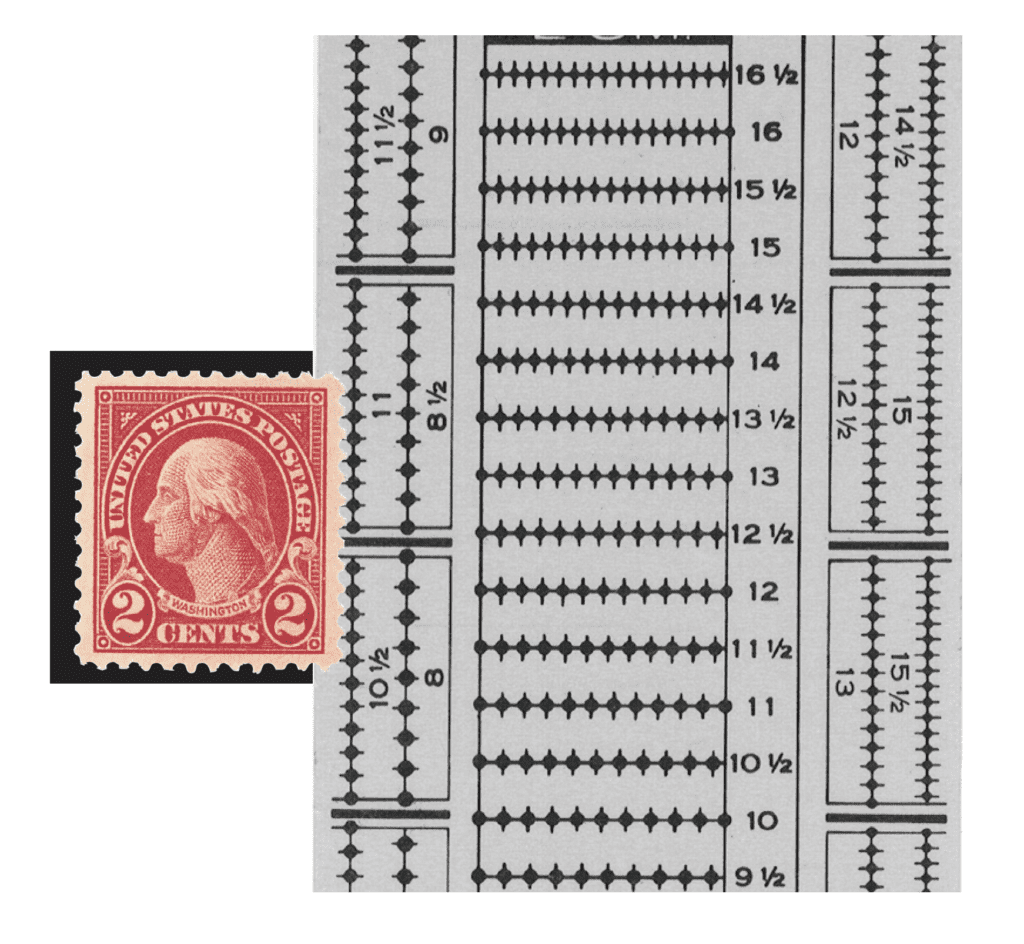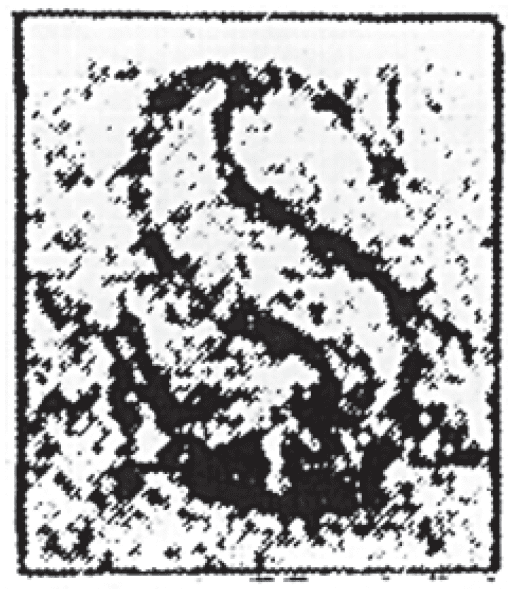How to Identify U.S. Stamps
The chief reward of collecting stamps is discovering the fun, relaxation, and thrill of acquiring the stamps you love best! Knowing the basics of identifying your stamps will add to your enjoyment. Two stamps can look the same, and yet are different issues with different Scott numbers and greatly differing values.
Measuring Perforations
You may find you have some older US stamps that look exactly alike. Measuring perforations can help you identify your stamps. A perforation gauge (shown here) measures the number of perforations in the space of 2 centimeters.

Always measure the horizontal (top or bottom) perforations of your stamps first, then the vertical (opposite sides). Make sure the circles on your perforation gauge fit perfectly into your stamp’s perforations. If two “look-alike” stamps have the same design, color, and perforation measurement, you may also need to check for a watermark.
Watermarks

Sometimes the only difference between stamps that look alike is their watermark. Watermarks are letters or patterns impressed into the paper used to produce certain stamps. Modern US stamps don’t have watermarks, but many older ones do, in the shape of a single line or double line U, S, or P. See illustrations below.
Watermarks were introduced as a way to deter counterfeiting. To see if your stamp has a watermark, place it face down in a watermark tray, and pour enough watermark fluid over it to cover completely. (Never use water.) The watermark should be visible; how well it shows varies with the stamp. You may not see a whole letter or design, but only part of one. Let your stamp dry completely before removing it from the tray. US watermarks are always letters like those shown. (Many foreign stamps have watermarks in the shape of a crown or other symbol alone or in addition to letters.) Click here for information on watermarking tools.

Single Line Watermark 
Double Line Watermark
Both watermarks are spread over the entire sheet of stamps.

